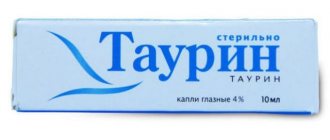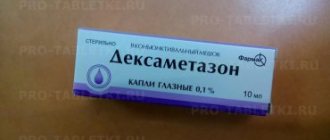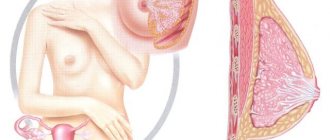Compound
One bottle of Irifrin 10% contains phenylephrine hydrochloride - 100 mg, and one bottle of Irifrin 2.5% - 25 mg.
Excipients: benzalkonium chloride, disodium edetate, sodium hydroxide, sodium hydrogen phosphate dihydrate, anhydrous sodium dihydrogen phosphate, sodium metabisulfite , citric acid, sodium citrate dihydrate , purified water.
One bottle of Irifrin BK (without preservative) 2.5% contains phenylephrine hydrochloride - 25 mg.
Composition of the drug
Before starting treatment, it is necessary to study the instructions for Irifrin eye drops (we have already discussed the price of the drug above). Since it is very important to understand what substance causes the desired effect of the drug.
Naturally, the drops contain an active ingredient and a number of excipients. The main component is the substance phenylephrine. It is this that, when it comes into contact with the eyeball, affects the capillaries and constricts the blood vessels. It is important to understand that the drug is equally effective on small and large vessels. As a result, the patient's pupil narrows.
This phenomenon occurs some time after application. Typically, the therapeutic effect becomes noticeable within thirty to sixty minutes. In this case, the components of the drug are not absorbed into the blood and are quite easily eliminated from the body.
Additional substances in the composition of the drug are indicated in its instructions. Irifrin eye drops (the price makes the product quite affordable for most patients) contain the following components:
- water for injections;
- lemon acid;
- sodium hydroxide;
- Benzalkonium chloride.
The color of the drops is usually light yellow, in some bottles they are completely transparent. Both options are normal.
Pharmacodynamics and pharmacokinetics
Pharmacodynamics
Phenylephrine is an adrenergic agonist with alpha-adrenergic activity. When taken in normal doses, it does not produce a stimulating effect on the central nervous system.
When used locally in ophthalmology, it stimulates the outflow of intraocular fluid, constricts the vessels of the conjunctiva and causes pupil dilation ( mydriasis ).
Phenylephrine has a strong stimulating effect on alpha-adrenergic receptors in postsynapses, has little effect on beta-adrenergic receptors in the cardiac region, and has almost no positive inotropic and chronotropic effects. The drug has a vasoconstrictor (vasoconstrictor) effect, similar to the effect of norepinephrine , but with phenylephrine it is weaker and longer lasting.
Vasoconstriction occurs 30-90 s after use, duration of action is 2-5 hours. Once administered (instilled), phenylephrine promotes contraction of the pupillary dilator, causing mydriasis . Pupil dilation is achieved within 20-60 minutes after instillation; continues after instillation of a 2.5% solution for 2 hours, 10% solution - 3-5 hours.
Pharmacokinetics
Phenylephrine freely penetrates into the tissues of the organ of vision. The maximum concentration in the blood occurs 10–20 minutes after local application. Pre-instillation of anesthetics increases absorption into the systemic circulation and prolongs mydriasis . The drug is excreted in the urine in its original form (less than 20%) and in the form of inert metabolites.
Pharmacological action and group
Irifrin eye drops belong to the pharmacological group of sympathomimetics. According to the instructions for use, Phenylephrine hydrochloride promotes rapid pupil dilation. This allows you to use the drug in preparation for various examinations. At the same time, it normalizes intraocular pressure, as it promotes the outflow of fluid inside the eye. It can also be used to narrow the vessels of the conjunctiva.
Irifrin does not affect the accommodation of the eye. It is applied topically, which is why it does not significantly stimulate the central nervous system.
The drug also has a pronounced vasoprotective effect that lasts for a long time. The duration of action of the drug is from 2 to 6 hours, depending on its dosage.
We also recommend that you read the instructions for use of Midrimax.
Indications for use
- The need for pupil dilation during ophthalmological diagnostic procedures (control of the posterior segment of the eye).
- Iridocyclitis (prevention of the appearance of posterior synechiae and weakening of exudation in the iris).
- Conducting a provocative study in individuals with a narrow anterior chamber angle and possible angle-closure glaucoma .
- In surgical ophthalmology during preoperative preparation for the purpose of pupil dilation.
- Differential diagnosis of deep and superficial eye injection .
- Therapy of glaucomocyclic crises .
- Performing laser interventions on the fundus of the eye and in vitreoretinal surgery .
- Therapy for red eye syndrome (to relieve hyperemia and sensitivity of the eye membranes).
- Orally and locally: to reduce swelling of the mucous membranes of the nasopharynx and conjunctiva in case of allergic and colds (as part of a combination treatment; only for Irifrin BK).
- Parenteral: to increase blood pressure during collapse and hypotension caused by a decrease in vascular tone (only for Irifrin BC).
Contraindications
- Allergy to the components of the drug.
- Angle-closure or narrow-angle glaucoma.
- Diabetes.
- Severe disorders of the cardiovascular system ( arterial hypertension , heart disease, aneurysm , tachycardia ).
- Thyrotoxicosis, hyperthyroidism.
- Use together with and within 14 days after stopping therapy with MAO inhibitors.
- Dilation of the pupil during surgery in patients with a defect in the integrity of the eye or in cases of impaired outflow of tear fluid.
- Concomitant use with tricyclic antidepressants, antihypertensive drugs (including beta blockers ).
- Congenital deficiency of glucose-6-phosphate hydrogenase .
- Porphyria.
- Low birth weight newborns.
Side effects
- From the eyes: conjunctivitis , swelling of the tissues of the periorbital region; possible burning sensation, irritation, blurred vision, lacrimation, discomfort, increased intraocular pressure.
- After taking Irifrin, reactive miosis . When using the drug again at this time, mydriasis is usually less pronounced. This effect is typical for older people.
- From the cardiovascular system: palpitations, tachycardia , reflex bradycardia , arrhythmia , arterial hypertension , occlusion of the coronary arteries of the heart, pulmonary embolism .
- Due to the strong contraction of the pupillary dilator caused by the action of phenylephrine, small grains of pigment from the iris . This suspension must be differentiated from anterior uveitis or the presence of blood cells in the anterior chamber cavity.
- Skin: dermatitis .
- Very rarely, when using Irifrin (10% eye drops), severe disorders occur, including vascular collapse, myocardial infarction and intracerebral hemorrhage .
Possible complications caused by the drug
The use of Irifrin can cause the following side effects:
- Burning sensation;
- Tearing;
- Feeling of discomfort, especially upon first use;
- Irritation of the mucous membrane.
The following complications may develop:
- Increased intraocular pressure;
- Conjunctivitis;
- Periorbital edema;
- Reactive miosis (occurs the day after application).
If any unwanted symptoms occur, you should immediately consult your doctor.
Normax: instructions for use
This article will tell you what operations are performed on the eyes using a laser.
Determination of visual fields is described in this article.
Irifrin eye drops, instructions for use
The instructions for Irifrin prescribe the use of drops topically.
For ophthalmoscopy, a single use of a 2.5% solution is used. For mydriasis , instillation of one drop of Irifrin 2.5% into the conjunctival sac is sufficient. Expansion of the maxillary force is achieved after 20–30 minutes and lasts for 1–3 hours. If necessary, it is possible to prolong mydriasis , for which another instillation .
In children over 12 years of age and adults with weak pupil dilation to provoke diagnostic mydriasis , the use of a 10% solution without dose adjustment is justified.
When conducting diagnostics, a single use of a 2.5% solution can be used for:
- provocative test in individuals with a narrow anterior chamber angle and possible angle-closure glaucoma ;
- differential diagnosis of the type of eye injection (superficial or deep);
- iridocyclite solution 2.5 or 10% is used to prevent the development and rupture of posterior synechiae; to reduce exudation in the anterior ocular chamber (one drop of Irifrin is instilled into the conjunctival sac 2-3 times a day);
- relief of glaucomocyclic crises . Phenylephrine produces a hypotensive effect in this pathology. A 10% solution is used 2–3 times a day;
- preparing patients for surgical interventions in 40–60 minutes to achieve pupil dilation, a single injection of a 10% solution is performed; After the integrity of the eye membranes is damaged, re-use of the drug is prohibited.
The 10% solution should not be used to soak tampons during surgery.
Irifrin BC is also used:
- for hypermetropia with a tendency to accommodation spasms, accompanied by high eye strain, the drug is instilled in the evening along with a 1% solution of cyclopentolate . With standard visual load, Irifrin BC is used before bedtime 3 times a week;
- in the treatment of true and false myopia - 1 drop before bedtime every 3 days for one month.
Method of congestion and dosage
During ophthalmoscopy
Use a one-time instillation of 2.5% dose. As a rule, to achieve mydriasis, add 1 drop of 2.5% of the drug into the conjunctival sac. Maximum middriasis is achieved after 15-30 minutes and is maintained at a sufficient level for 1-3 years. If it is necessary to support mydriasis for about three hours, re-instillation is possible after 1 year.
To carry out diagnostic procedures, a one-time instillation of 2.5% is used:
─ as a provocative test in patients with a narrow profile of the anterior chamber and suspected of closed-cuta glaucoma
. If the difference between the values of the internal clamp before instillation and after expansion of the zone becomes 3 to 5 mm Hg. Art., a provocative test is considered positive;
─ for differential diagnostics of the eyeball injection type:
If after 5 minutes after instilation the blood vessels of the eyeball are heard, the injection is classified as superficial; When saving the red eye, it is necessary to carefully monitor the patient for the presence of iridocyclitis or scleritis, in order to be aware of the dilation of the blood vessels in the deeper tissues of the eye.
In case of iridocyclitis, anterior uveitis, the drug is used to treat and prevent the development of posterior synechiae; to reduce exudation in the anterior chamber of the eye
. With this method, 1 drop of the drug is instilled into the conjunctival sac of the diseased eye(s) 2-3 times per dose.
Complex therapy for accommodative spasm and asthenopia in school-age children.
For mild cases of short-sightedness, take 1 drop of 2.5% dose of the drug before going to bed on the day of high health.,
in the middle stage of short-sightedness ─ 1 drop of 2.5% dose 3 times a day before bedtime, and in case of emetropia (myopia) ─ every day, regardless of vision.
For patients with farsightedness, who have a tendency to develop a spasm, take 2.5% doses of the drug in combination with 1 drop of 1% cyclopentolate before bedtime during the period of pregnancy, and in the emergency hour, take 3 strike for a week.
Treatment for patients of the summer age.
There is no need to adjust the dose for summer age patients. Repeated installations may produce fewer mydriase expressions.
Before the first hardening of the slide, screw the cup all the way, wrapping it around to the right. A scarifier, which can be placed in a container, pierce the spout of the bottle. After this, you can open the bottle as you would, wrapping the cap left-handed. When performing instillation, it is necessary to adhere to the sanitary and hygienic rules, shake your hands gently, and do not touch the nozzle with your fingers.
Children
.
In pediatric practice, for diagnostic procedures (ophthalmoscopy, retinography), the drug can be administered to children from the first days of life. Premature babies can be treated with caution after the doctor has assessed the “risk-corrosive” relationship: no more than 1 drop in the skin.
Interaction
Pupil dilation increases when phenylephrine and atropine .
The use of a 2.5 or 10% solution of the drug with MAO inhibitors and for three weeks after their discontinuation should be done with caution, since in this case an uncontrolled increase in blood pressure is possible.
The use of Irifrin 10% in combination with beta-blockers can provoke acute arterial hypertension .
Use together with sympathomimetics may enhance the cardiovascular effects of phenylephrine.
special instructions
Since the duration of pupil dilation can reach 1-3 hours, patients may experience a feeling of photophobia, therefore, until vision function is restored, you need to protect your eyes from strong sunlight. Reading and watching TV programs are prohibited.
It is possible to develop reactive miosis , which is more often observed in older people after using phenylephrine, and repeated use of the drug leads to a weakening of pupil dilation.
benzalkonium chloride as a preservative , it may cause discoloration of soft contact lenses. Before using Irifrin, the patient must remove the lenses and wait 15 minutes after instillation before using them again.
Irifrin's analogs
Level 4 ATC code matches:
Norepinephrine
Mezaton
Dobutamine
Dopamine
Dopamine
Adrenalin
At present, the most common analogues of Irifrin eye drops are: Mezaton , Nazol Baby , Nazol Kids , Fenephrine 10% .
Irifrin price
The price of Irifrin 2.5% eye drops in Russia ranges from 333 to 409 rubles, Irifrin BC will cost 484-510 rubles.
In Ukraine, eye drops Irifrin 2.5% will cost 58-83 hryvnia, and the price of Irifrin BC will average 78 hryvnia.
- Online pharmacies in RussiaRussia
- Online pharmacies in UkraineUkraine
- Online pharmacies in KazakhstanKazakhstan
ZdravCity
- Irifrin eye drops 2.5% 5ml Sentiss Pharma Pvt.
Ltd. / Sentiss Pharma Pvt. Ltd. RUR 575 order - Irifrin BK eye drops 2.5% 0.4 ml 15 pcs. Sentiss Pharma Pvt. Ltd. / Sentiss Pharma Pvt. Ltd.
RUR 616 order
Pharmacy Dialogue
- Irifrin (eye drops 2.5% 5ml)Sentiss
RUR 654 order
- Irifrin (eye drops 2.5% 5ml)Promed Exports
RUR 673 order
- Irifrin BK (tb.-drops .2.5% 0.4ml No. 15)Promed Exports
RUR 696 order
- Irifrin BK 2.5% eye drops 0.4ml No. 15Sentiss
710 rub. order
Europharm* 4% discount using promo code medside11
- Irifrin eye drops 2.5% 5 mlSentiss Pharma Pvt.Ltd
RUR 714 order
- Irifrin bk eye drops 2.5% 0.4 ml 15 tube droppers Sentiss Pharma Pvt. Ltd. / Sentiss Pharma
750 rub. order
show more
Pharmacy24
- Irifrin 2.5% 5 ml No. 1 drops Sentiss Pharma PVT.LTD, India
143 UAH order
PaniPharmacy
- Irifrin liquid Irifrin eye drop bottle 2.5% 5ml India, Sentiss Pharma
177 UAH order
show more
Analogs
Irifrin analogues for the active component include Neosinephrine-Pos and Vizofrin in the form of eye drops. There are no analogues of the drug based on the mechanism of action.
The pharmacological group of mydriatics for local use is represented by dozens of drugs. Popular analogues of Irifrin are in the table below.
| Name, country of origin | Active substance | Peculiarities | average price |
| Mezaton (Russia) | Phenylephrine | Analogue of the drug according to the active substance | Eye drops 2.5%, 5 ml - 95 rub. |
| Tropicamide (Romania) | Tropicamide | Causes paralysis of accommodation and mydriasis due to blockade of m-cholinergic receptors | Drops 1%, 10 ml - 120 rub. |
| Midriacil (Belgium) | Tropicamide | Has a similar effect to Tropicamide | Eye drops 1%, 15 ml - 350 rub. |
| Midrimax (Russia) | Phenylephrine Tropicamide | A complex drug whose active substances potentiate (strengthen) the effects of each other | Eye drops 50 mg 8 mg, 5 ml - 160 rub. |
Irifrin's analogue is Midrimax.
Irifrin is one of the popular drugs for restoring the functions of eye accommodation in adults and children. Among the advantages of the product are high efficiency and speed. The drops are not without their drawbacks: according to reviews from most patients, these include high price, discomfort during use, and the possibility of developing side effects. Use Irifrin only as prescribed by a specialist, strictly following your doctor's instructions.
Svetlana Sharaeva









